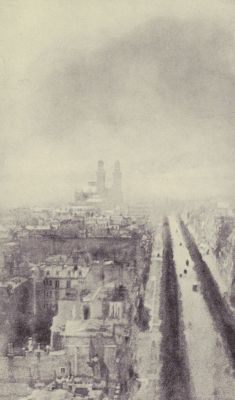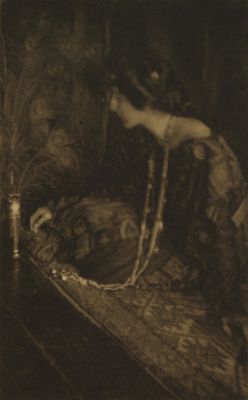
Title
In the CircusArtist
Rubincam, Harry C. (American, 1871-1940)Publication
Camera Work XVIIDate
1907Process
PhotogravureAtelier
Manhattan Photogravure Company, NYImage Size
15.5 x 19.3 cm
This famous photograph by Harry C. Rubincam is a benchmark in the development of modern photography. Often grouped in the same sentence as Alfred Stieglitz’s, The Steerage, this key image represents a turning point in the evolution of photography as a unique art. In the Circus (also known as The Circus Rider) was equally a groundbreaking technical achievement. Rubincam reduces the dizzying visual complexity of the crowds and activity of the circus to a highly controlled and specifically designed composition emphasizing the seams of the tent, the circle of the ring and the delicate grace of the performer. Its technical mastery is muted through delicate printing and the broad appeal of its vernacular subject. He has transformed a thoroughly American scene into one of modernist simplicity on which the disoriented lines take on an expressive identity of its own. In the Circus is unusual among art photographs from this time for its spontaneity and is included in the permanent collections of the Metropolitan Museum of Art, Museum of Modern Art, MFA in Boston and The Art Institute of Chicago among many others.
The subject, May Wirth, was born in Queensland, Australia in 1894 and became a circus and vaudeville performer, famous for her ability to do forward and backward somersaults on a running horse. Wirth began performing as a bareback rider at the age of three, and appeared at the Hagenback Wonder Zoo (London) and the Barnum and Bailey Circus (America); where she was dubbed "the greatest lady rider in the world". Later, she became the star of her own Wirth Circus. In 1963, she was inducted into the Circus Hall of Fame as a bareback rider.
Reproduced / Exhibited
Doty, Robert M. Photo-secession: Photography As a Fine Art. N.Y: Eastman, 1960. plate XX.
Gernsheim, Helmut. Creative Photography. Aesthetic Trends 1839-1960. [with Illustrations.]. London: Faber & Faber, 1962. p. 150
Kruse, Margret. Kunstphotographie Um 1900: D. Sammlung Ernst Juhl; Hamburg: Museum für Kunst u. Gewerbe, 1989.








